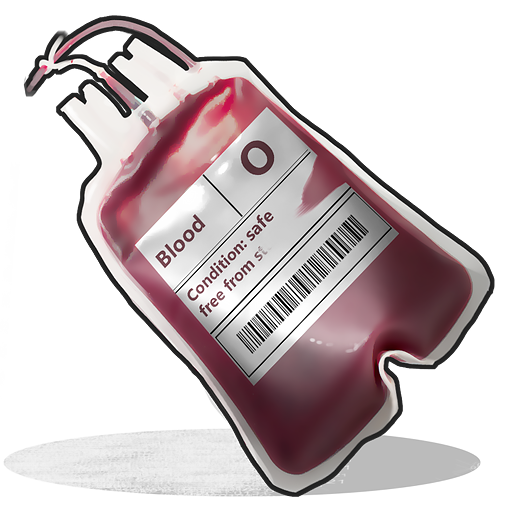Blood
Blood Bag
The Blood Bag was a feature in the old version of Rust that allowed players to donate their blood to other players. It was added to the game in 2014, but was removed in later updates.
The Blood Bag feature was added to Rust in 2014 as part of an update that also introduced the ability to craft syringes. The Blood Bag was intended to provide an alternative method of healing other players, in addition to the syringe.
To use the Blood Bag, players had to first fill it with their own blood. This was done by equipping the Blood Bag and then using a syringe on themselves. Once the Blood Bag was filled, it could be used to heal other players by equipping the Blood Bag and then using it on the other player.
However, the Blood Bag feature was not without its issues. Players quickly discovered that they could use the Blood Bag to transfer infected blood to other players, which would cause them to become sick and eventually die. This made the Blood Bag a powerful tool for griefing other players.
Despite the issues with griefing, the Blood Bag was still a popular feature among Rust players. Some players even used it as a way to roleplay as doctors or medics, offering their services to other players in exchange for resources or protection.
In addition to its use as a healing item, the Blood Bag also had some interesting lore behind it. In the game's lore, the Blood Bag was created by a fictional organization known as the United States Biomedical Research Corps, or USBMRC. The USBMRC was responsible for the creation of the Blood Bag as a way to collect and store blood samples for research purposes.
Removal
As a result of the issues with griefing and the overall balance of the game, the Blood Bag was eventually removed from Rust in later updates. While it was a unique feature that added to the game's realism, it ultimately proved to be too problematic for gameplay.
The Blood Bag was a short-lived feature in the old version of Rust that allowed players to donate their blood to other players for healing. While it added to the game's realism, it was ultimately removed due to issues with griefing. Despite its removal, it remains a memorable part of Rust's history and evolution as a game.

 Garry's Mod
Garry's Mod
 Rust
Rust
 Steamworks
Steamworks
 Wiki Help
Wiki Help